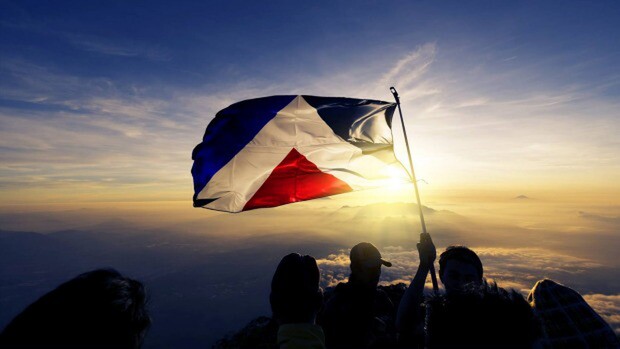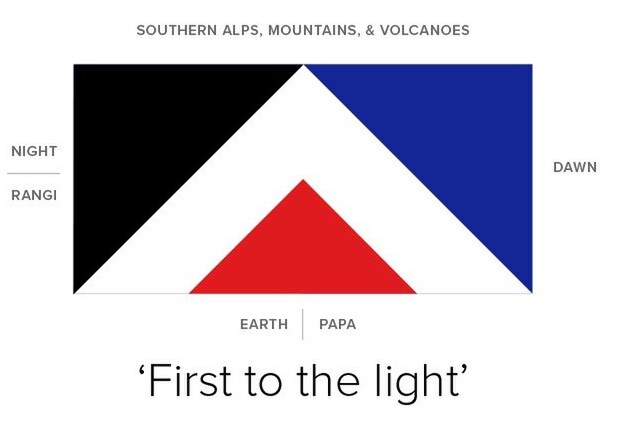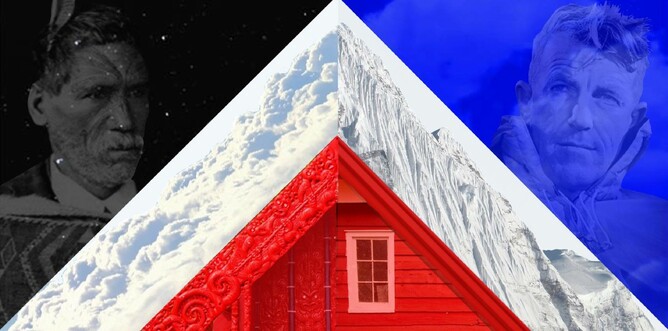This is a re-print of a blog we published in September 2015, at the height of the flag debate in New Zealand:
For anyone living under a rock, or outside New Zealand, there has been something of a nationwide flag selection competition going on in this fair country over the past few weeks.
While thousands of Syrian and other refugees drown in their desperation to seek shelter in Europe, and America astounds the world with the candidates seeking to be the next leader of the free world, New Zealand has had little more on its agenda than a spot of pole dancing: flagpole dancing.
Whether you think it's an expensive, unnecessary political distraction or an important chapter in New Zealand's national story (see John Oliver's take on it for instance), one thing is for sure: choosing a new national flag design has become the topic of conversation in offices, classrooms and dinner tables the length and breadth of the country. Like it or not, everyone has a view of some sort on it.
Why? A bit like choosing a name for your child, you soon discover how passionately you dislike options you'd never thought about before. And a flag gets to the heart of a nation's character and values pretty quickly. So it's personal. To everyone.
And people don't like the 'official' options that have been put forward. After 10,000+ designs submitted by the public were whittled down a 40-flag long list, four flag designs were selected for a public referendum by an official Flag Consideration Panel, formalised by New Zealand's Governor General, signed off by Cabinet, and revealed to the public. To almost universal - and entirely predictable - disapproval.
http://www.radionz.co.nz/news/national/282970/final-four-flag-designs-reactions-unfurl
Then, amid the discontented grumbling and a feeling that the process was being manipulated for political reasons, an earlier-discarded flag design - known as Red Peak - has come to the fore; not through the official process, but as a result of - and almost entirely supported by - social media.
The Red Peak design, put forward by Xero product design director Aaron Dustin, was originally selected for the long list of 40 flags but failed to make the shortlist of four. Indeed, during initial polling, it came very near - or at - the bottom of the list for many groups of people.
Yet, it gathered pace online, reaching pay-attention levels of support in a nation where only a handful of Facebook posts or complaints can lead to official change. Change.org has been running a petition that now stands at 27,731 supporters and the Red Peak NZ Flag Facebook page currently has 19,397 likes.
Why?
It's thanks to a combination of factors, primary among which are:
Imagery – great visuals, lifting it from flat, meaningless panels of colour to a coherent series of living, human symbols. Verbal imagery has added to the message, with a powerful emotional reference to 'first to the light', and even the Red Peak name itself carries the right kind of blended imagery to appeal to the pioneering, punch-above-our-weight Kiwi spirit.
While thousands of Syrian and other refugees drown in their desperation to seek shelter in Europe, and America astounds the world with the candidates seeking to be the next leader of the free world, New Zealand has had little more on its agenda than a spot of pole dancing: flagpole dancing.
Whether you think it's an expensive, unnecessary political distraction or an important chapter in New Zealand's national story (see John Oliver's take on it for instance), one thing is for sure: choosing a new national flag design has become the topic of conversation in offices, classrooms and dinner tables the length and breadth of the country. Like it or not, everyone has a view of some sort on it.
Why? A bit like choosing a name for your child, you soon discover how passionately you dislike options you'd never thought about before. And a flag gets to the heart of a nation's character and values pretty quickly. So it's personal. To everyone.
And people don't like the 'official' options that have been put forward. After 10,000+ designs submitted by the public were whittled down a 40-flag long list, four flag designs were selected for a public referendum by an official Flag Consideration Panel, formalised by New Zealand's Governor General, signed off by Cabinet, and revealed to the public. To almost universal - and entirely predictable - disapproval.
http://www.radionz.co.nz/news/national/282970/final-four-flag-designs-reactions-unfurl
Then, amid the discontented grumbling and a feeling that the process was being manipulated for political reasons, an earlier-discarded flag design - known as Red Peak - has come to the fore; not through the official process, but as a result of - and almost entirely supported by - social media.
The Red Peak design, put forward by Xero product design director Aaron Dustin, was originally selected for the long list of 40 flags but failed to make the shortlist of four. Indeed, during initial polling, it came very near - or at - the bottom of the list for many groups of people.
Yet, it gathered pace online, reaching pay-attention levels of support in a nation where only a handful of Facebook posts or complaints can lead to official change. Change.org has been running a petition that now stands at 27,731 supporters and the Red Peak NZ Flag Facebook page currently has 19,397 likes.
Why?
It's thanks to a combination of factors, primary among which are:
Imagery – great visuals, lifting it from flat, meaningless panels of colour to a coherent series of living, human symbols. Verbal imagery has added to the message, with a powerful emotional reference to 'first to the light', and even the Red Peak name itself carries the right kind of blended imagery to appeal to the pioneering, punch-above-our-weight Kiwi spirit.
Storytelling and context – fitting the flag design into the national identity by taking flat three two-dimensional triangles and giving it context by placing it on top of mountains in the hands of intrepid kiwis. This takes the story of mountains, night, earth and dawn expressed in the design and places it in human hands – in a nation rightly proud that one of its own was the first person to summit Everest: powerful stuff.
Shareable conversation – as the home of engagement and conversation, social media is ideally placed to be the forum for debate to continue, particularly if people feel that it has been shut down in the more official channels. The lack of perceived choice in the four official designs, combined with the ease with which people can share images and create measurable movement, means that the conversation continues apace online, and doesn't look like it's stopping anytime soon.
Can officialdom keep up? What's their current official answer to it? To try to shut the debate about Red Peak down and deny it entry into the official process.
But social media is not an official inquiry – it's what we're talking about online. It's also the place where many people feel comfortable in saying the things they would not be happy to say in person.
And, if we've learnt anything from social media worldwide, it is that it is like floodwater: it flows around problems and finds new ways to carry on downstream, taking people, houses, and nations with it.
So, what will be interesting to see is what will happen to the debate next that Red Peak has been officially prevented from re-entering the official selection process by the Prime Minister.
Do you think we have seen its peak, or will red mist power the debate yet further?
FURTHER NOTE: Red Peak was re-included in the process but didn't make the final round of two flags...
Can officialdom keep up? What's their current official answer to it? To try to shut the debate about Red Peak down and deny it entry into the official process.
But social media is not an official inquiry – it's what we're talking about online. It's also the place where many people feel comfortable in saying the things they would not be happy to say in person.
And, if we've learnt anything from social media worldwide, it is that it is like floodwater: it flows around problems and finds new ways to carry on downstream, taking people, houses, and nations with it.
So, what will be interesting to see is what will happen to the debate next that Red Peak has been officially prevented from re-entering the official selection process by the Prime Minister.
Do you think we have seen its peak, or will red mist power the debate yet further?
FURTHER NOTE: Red Peak was re-included in the process but didn't make the final round of two flags...



